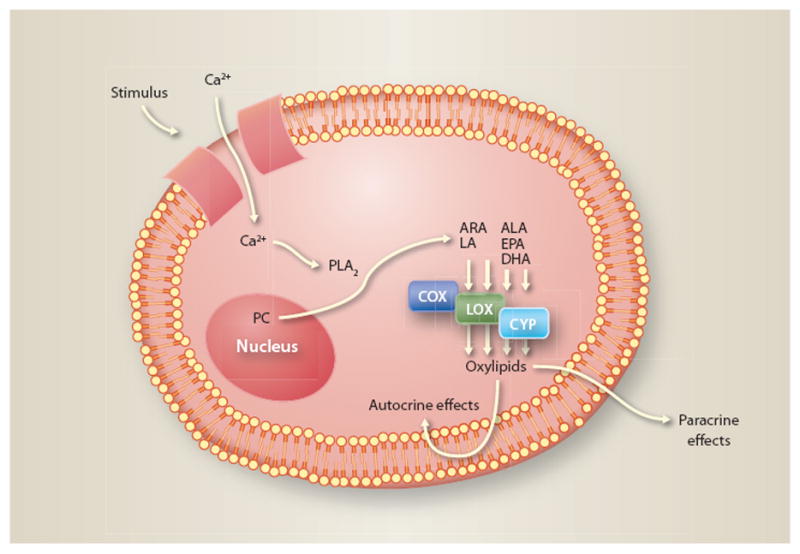Fig. 2.

Cellular mechanisms involved in producing oxylipin derivatives of omega-3 and omega-6 fatty acids. A stimulus such as cell wall injury activates transporter proteins, moving Ca2+ ions into the cell. This stimulates the release of fatty acids from nuclear membrane phospholipids (phosphatidycholine [PC]) by the enzyme phospholipase A2 (PLA2), and the conversion of omega-3 (eicosapentaenoic [EPA], docosahexaenoic [DHA] and alpha-linolenic [ALA] acid) and omega-6 (arachidonic [ARA] and linoleic [LA] acid) fatty acids into signaling oxylipin products via the COX (cyclooxygenase), LOX (lipoxygenase) and CYP 450 (cytochrome P450) enzymes. These oxylipins are signaling molecules that help regulate inflammation, increasing and decreasing this important immune response within the cell (autocrine) and in neighboring cells (paracrine).
